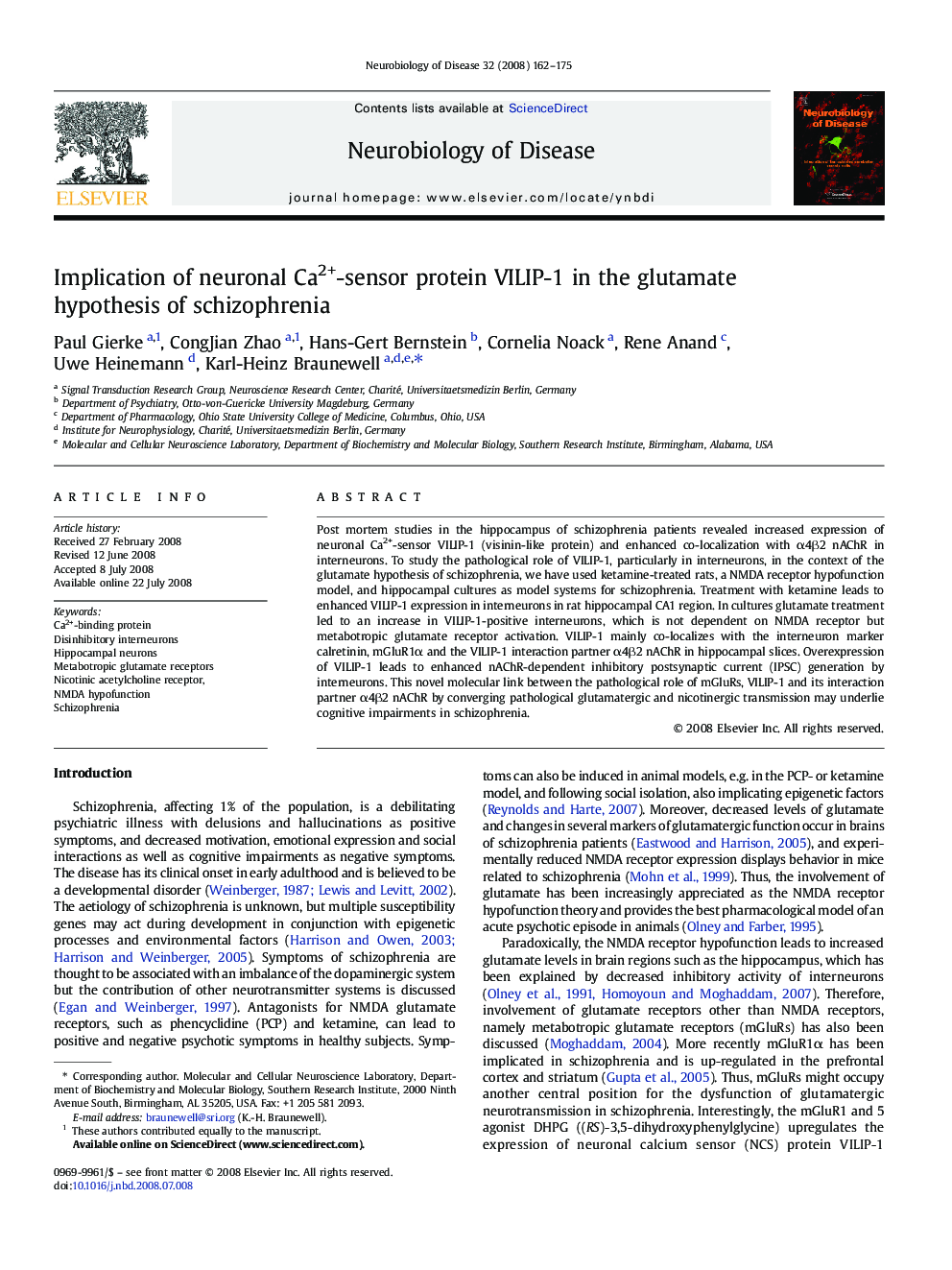| Article ID | Journal | Published Year | Pages | File Type |
|---|---|---|---|---|
| 3070151 | Neurobiology of Disease | 2008 | 14 Pages |
Post mortem studies in the hippocampus of schizophrenia patients revealed increased expression of neuronal Ca2+-sensor VILIP-1 (visinin-like protein) and enhanced co-localization with α4β2 nAChR in interneurons. To study the pathological role of VILIP-1, particularly in interneurons, in the context of the glutamate hypothesis of schizophrenia, we have used ketamine-treated rats, a NMDA receptor hypofunction model, and hippocampal cultures as model systems for schizophrenia. Treatment with ketamine leads to enhanced VILIP-1 expression in interneurons in rat hippocampal CA1 region. In cultures glutamate treatment led to an increase in VILIP-1-positive interneurons, which is not dependent on NMDA receptor but metabotropic glutamate receptor activation. VILIP-1 mainly co-localizes with the interneuron marker calretinin, mGluR1α and the VILIP-1 interaction partner α4β2 nAChR in hippocampal slices. Overexpression of VILIP-1 leads to enhanced nAChR-dependent inhibitory postsynaptic current (IPSC) generation by interneurons. This novel molecular link between the pathological role of mGluRs, VILIP-1 and its interaction partner α4β2 nAChR by converging pathological glutamatergic and nicotinergic transmission may underlie cognitive impairments in schizophrenia.
